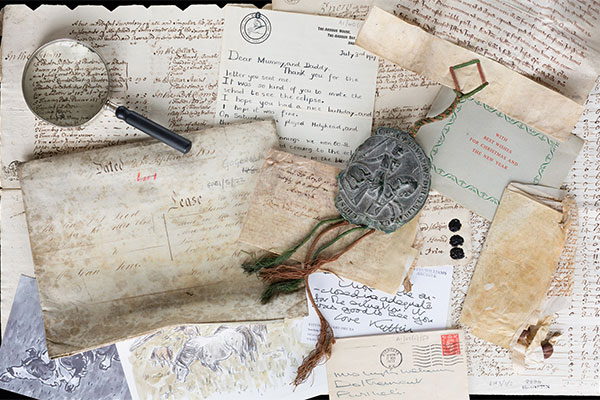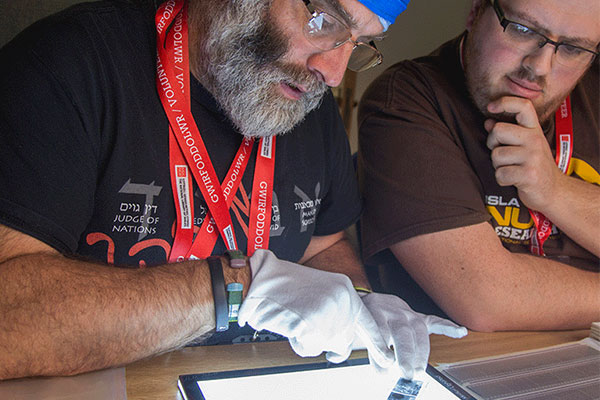Alongside the many reels of film collected by the National Library of Wales Screen and Sound Archive are examples of film technology – the cameras and projectors which were originally used to shoot and show the films.
The significance of these collections is becoming better appreciated now that the almost universal transition to digital image making has made them and the material of film less familiar. The recent book published by the International Federation of Film Archives (FIAF), Tales from the Vaults, is a good example of the trend to shed light on these collections.
These devices are a physical remnant of the experience of making and viewing analogue media over the last century and more. Although that experience is incompletely represented and can never be fully recovered, through exploring these machines it can be more easily imagined. The film collection is now only experienced through online video, but these machines establish a context for the film holdings which remind us of original practices of production and distribution.
One such device found in the Screen and Sound Archive, is a Wrench Model C projection mechanism for 35mm film, made in London about 1907 by John Wrench & Co.

This machine is reputed to have been used by William Haggar, a travelling showman and film pioneer based in Wales. It could have been part of the family fairground Bioscope show toured around South Wales by traction engine. Alternatively, it could have been installed in one of the first cinemas that Haggar and his children managed from 1910. Haggar’s first projector, acquired as a second-hand outfit in 1898 for £80, had also been made by Wrench but he had gone on to use a variety of machines made or marketed by Maguire and Baucus, Charles Urban, Pathé and Gaumont.
As is common with these devices, only the projection mechanism survives. It is missing its spool arms, lamphouse, shutter and even its lens. An image from the 1907 Wrench catalogue helps to show how it would have looked at the time. My thanks to Dr. Nicholas Hiley for providing this from a book in his personal collection.

A notable feature still present is the safety shutter which falls into place when the cranking speed of the projector is insufficient. This protects the highly flammable nitrate-based film from being exposed to the heat of the light source for more than a split second - a crucial safety feature in the early years of film exhibition when nitrate fires claimed many lives.
The Haggar enterprise included films shot by William Haggar and starring members of his family as well as many films made by other early pioneers. Their Bioscope shows featured programmes made up of a mixture of these films which were by far the most expensive part of the operation, costing £1000 a year to buy. Unfortunately, the danger posed by nitrate film fires is the reason that hardly anything survives from their extensive collection which today would be considered a priceless cultural treasure. Peter Yorke recalls a conversation with Roy Haggar in which he says the films had been stored in a garage behind a cinema in Fordingbridge. However, when the cinema was reconstructed, an inspector condemned the collection as a fire hazard, and they were destroyed.
Luckily, at least some of William Haggar’s pioneering Welsh film making does survive and the nitrate originals of these are kept securely in specially designed vaults at the BFI National Film Archive. While some of these rare Haggar films can be seen in digital versions, if you do visit the BFI Player to watch some of his work – a film such as The Sheep Stealer (1908), perhaps - it is instructive to think of William or one of his eight adult children using a machine like the Wrench Model C, literally cranking every frame by hand through the intermittent mechanism. The gear train whirs into life and images stream past the light coming from the lamphouse – the carbon arc hissing and smoking as it burns – and a lively flickering image appears on a large canvas sheet. All this in the place of a click of the mouse!
Notes
FIAF, the International Federation of Film Archives, brings together institutions dedicated to rescuing and preserving films both as an artform and as historical documents.
Bibliography
The Haggar Memoirs, collected by Peter Yorke, 2008
William Haggar: Fairground Film-maker, Accent Press 2007
Wales and Cinema: The First Hundred Years, David Berry, University of Wales Press, 1994
Category: Article





